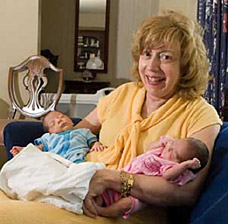
Having a period that lasts longer than seven days. Other red flags include:īleeding between periods and having more than one period in a month. But how much bleeding is too much? Any amount of bleeding that interferes with your daily quality of life is a concern. The distortion of the endometrial cavity or womb created by a fibroid can cause the heavy vaginal bleed. “Many women report challenges with depression, anxiety, reduced quality of life and distorted body image.” “In addition to the many physical symptoms, women are impacted emotionally by living with fibroids,” says Marsh. Pressure on the rectum, causing constipation and back pain.īloating, which can be caused by a large fibroid pushing into the stomach area. Pressure on the bladder, causing frequent urination. Pelvic pain and heavy menstrual bleeding, which can lead to anemia or the need for a blood transfusion.

Many women who have fibroids don’t experience symptoms, but those who do often have difficulty living with them. However, you shouldn’t discount symptoms simply because you don’t have a family member with fibroids. Having a family member with fibroids can also increase your risk. Research indicates that fibroids are controlled by the hormones estrogen and progesterone and that there is a hereditary component. Women who are obese are at higher risk of developing fibroids and there is a link between fibroids and women who consume large quantities of red meat. “African American women are also diagnosed with fibroids at a younger age, with more than 25 percent already developing fibroids between the ages of 21–30.” “Fibroids are a disease of all women, but African American women have a higher prevalence for fibroids, with 80–90 percent being diagnosed with the condition ,” says Marsh. After menopause, fibroids usually shrink. Who gets fibroids and what causes them?įibroids become more common as women age and are most common in women/those assigned female sex at birth in their 40s and early 50s. If you’re living with fibroids, or suspect you might have fibroids, here are seven things Marsh says you need to know:ġ. , chief of reproductive endocrinology and infertility at the Center for Reproductive Medicine at Michigan Medicine’s Von Voigtlander Women’s Hospital. While fibroids are common, they’re often not discussed, explains Erica Marsh, M.D. LISTEN UP: Add the new Michigan Medicine News Break to your Alexa-enabled device, or subscribe to our daily updates on iTunes, Google Play and Stitcher.

Because so many women are affected by them, and because they’re the leading cause of hysterectomies in the United States, fibroids are an important public health concern. Women can have a single fibroid or multiple fibroids and they can range from the size of a seed to the size of a melon.

Leiomyomas, or “fibroids” as they are commonly known, are fibrous tumors that grow in the wall of the uterus, and they’re almost always non-cancerous. Whether it’s recovery after having a baby, incontinence or autoimmune issues, women deal with conditions that are difficult to discuss. Women play a critical role in maintaining the health of their families, however, when it comes to their own well-being, many suffer in silence while battling unique health concerns.


 0 kommentar(er)
0 kommentar(er)
